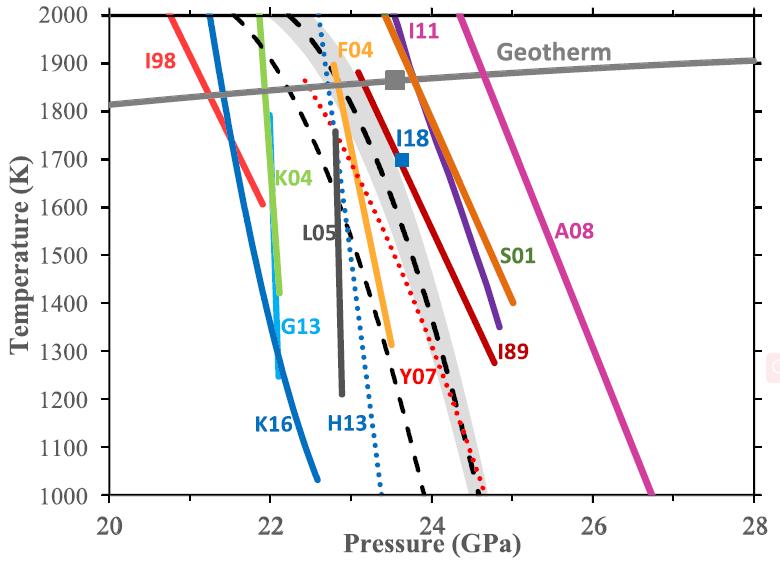The seismic discontinuity that occurs at an average depth of 647-654 km, usually called the 660 km seismic discontinuity, is the boundary between the transition zone and the lower mantle. It is considered to be caused by the transformation of ringwoodite to bridgmanite and MgO (post-spinel transition).
One important parameter that can potentially affect the post-spinel transition is hydration. According to recent studies, the transition zone may contain significant amounts of water, and thus understanding the effect of water on the post-spinel transition is important to determine its properties.
Dr. Joshua Muir, the postdoctoral researcher, and the team leader Prof. ZHANG Feiwu from the Institute of Geochemistry of the Chinese Academy of Sciences (IGCAS), in collaboration with Prof. John Brodholt from University College London (UCL), investigated the effect of water on the post-spinel transition at high temperatures and pressures.
The results indicated that the water only had a very small effect on the Clapeyron slope of the post-spinel transition. On the other hand, water had a moderate effect on its depth. 1 wt.% water increased the depth of phase transition onset by about 8 km. This variation on depth was relatively small compared to seismically observed variations in the 660 km discontinuity of around 35 km and so water alone could not account for the observed 660 km discontinuity topography.
Furthermore, this study demonstrated that the addition of water caused a large broadening of the three-phase loop (ringwoodite + bridgmanite + MgO) through the development of post-spinel transition. The width of the phase loop was negligible for water contents less than about 1000 ppm, but then grew rapidly to become about 10 km wide, before shrinking again as the water content approaches ringwoodite saturation.
The study, published in Earth and Planetary Science Letters on April 14, was supported by the National Natural Science Foundation of China, PIFI from Chinese Academy of Sciences (CAS) and NERC Grants.


Fig. Phase boundary for post-spinel transition (top), and the width of the three-phase loop as a function of water content at 1873 K (bottom) (Image by IGCAS)
Contact: ZHANG Feiwu
Institute of Geochemistry of the Chinese Academy of Sciences
E-mail: zhangfeiwu@mail.gyig.ac.cn
(By Prof. ZHANG Feiwu's group)